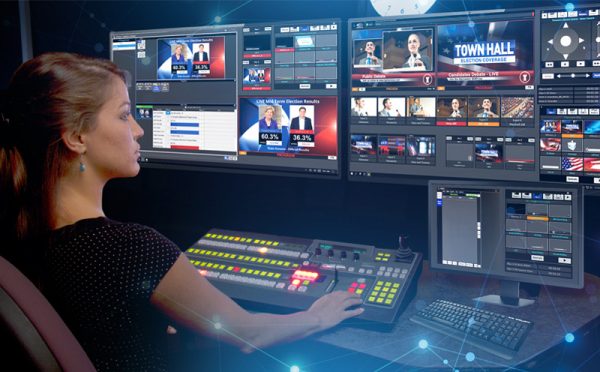By Graham Sharp for NewsCast Studio
 Let’s look at how the impact of digital technology, the move to consumer off-the-shelf hardware (commonly called CoTs), and the use of IP and networking has on the one hand enabled us to do much more; integrated format-agnostic processing, more automation, increased connectivity, control and collaboration; but on the other-hand introduced a whole new language, terminology and along with it, marketing hype.
Let’s look at how the impact of digital technology, the move to consumer off-the-shelf hardware (commonly called CoTs), and the use of IP and networking has on the one hand enabled us to do much more; integrated format-agnostic processing, more automation, increased connectivity, control and collaboration; but on the other-hand introduced a whole new language, terminology and along with it, marketing hype.
We all read the articles and advertisements filled with buzz words and three- or four-letter acronyms promoting the latest technology and telling us we must have it, for various reasons.
To many people, this is a lot to take in, so this year we will try to demystify this transition, separate hype from reality and provide a basic understanding of how these new technologies work, the terminology used and how a non-trained user can utilize the significant advantages that networking and video over IP provide on a daily basis.
On first glance, dedicated video infrastructure – cabling, connectors, switching, etc. is a much more appropriate format than an IP network for moving high-quality video around.
Video infrastructure, as we all know and love it, uses a dedicated cable or interface, is perfectly timed and synchronous and carries a full bandwidth video signal.
Video over IP uses a general-purpose, non-dedicated network. It’s asynchronous and not perfectly timed, so we have to chop up the video to fit the IP transport protocol and compress the video due to limited bandwidth.
Then why do we do it? Well, there are multiple reasons:
- Consumer off-the-shelf technology is a good value because of the volume sold
- Robotic cameras need one cable for video, control and power (POE)
- Utilizes off the shelf switches and infrastructure — any number of IP inputs can exist on the network and be selected from the application
- Video and other content takes advantage of the security and management features of IP
- IP extends beyond the facility to the worldwide web with the use of a suitable router
- It’s easy to bring in digital files and other computer-based applications
- IP networks can carry any and all formats once appropriately conditioned
- Infrastructure is readily available and there is a large pool of knowledgeable technicians
With the move to CoTs and IP, we are riding the benefits of this scale which results in more robust solutions at competitive pricing. I’ll leave you with a closing thought: The entire broadcast technology industry is about the same size as HP’s Printer Division. It is almost insignificant when compared to the total IT industry.
The transition is truly democratizing video production and distribution by making high-quality products available at affordable pricing.
Read the column on newscaststudio.com.
![Broadcast Pix, Inc. [US] Logo](https://broadcastpix.com/wp-content/uploads/2018/05/broadcastpix-inc-sticky-logo7.png)